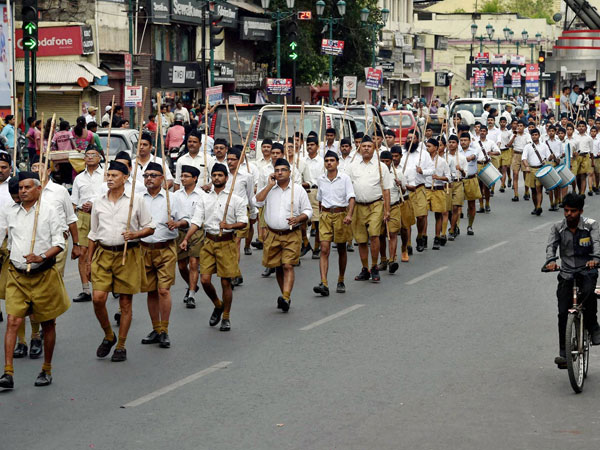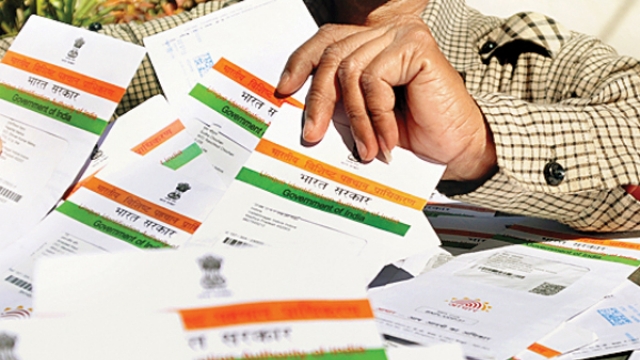Dalit unrest over the last few months have done more than just cloud the Bharatiya Janata Party’s electoral prospects in upcoming Assembly elections. They have also left a large number of Rashtriya Swayamsevak Sangh shakhas devoid of Dalit members. Several such branches had been started in lower-caste localities across north and western India after Narendra Modi became prime minister in 2014.
The phenomenon is glaring in Maharashtra and Gujarat, where Dalits recently took to streets to register their protest against attacks by a Hindutva-inspired group. It is also very evident in Uttar Pradesh and Punjab, where Assembly elections are due early next year. Dalits have significantly disappeared from RSS shakhas in Bihar and Haryana.
This has undermined the massive drive launched by the RSS to spread its presence among people belonging to the lower castes.
“New shakhas in Dalit localities were started because we had noticed that shakhas in upper-caste localities were not being able to attract Dalit men,” said a senior office-bearer of the RSS from Meerut. “For some time there was a lot of enthusiasm, and a significant number of young men started attending shakhas in Dalit localities. But now, despite our karyakartas trying hard, most of these shakhas have become a farce.”
In the rest of India…
It isn’t only the Meerut prant that has run into trouble. Senior RSS office bearers of five other prants in Uttar Pradesh – Braj, Awadh, Kashi, Kanpur and Goraksha – also admitted that Dalits were refusing to attend shakhas. The same complaint was repeated by RSS office-bearers in prants like West Maharashtra, Gujarat, Punjab, Haryana, Uttar Bihar and Dakshin Bihar.
The exodus of lower castes from the Sangh Parivar was strongly felt over a month ago, when the BJP was forced to cancel a Dalit rally by party president Amit Shah, scheduled to be held in Agra on July 31. Two days before the event, the RSS realised that it wouldn’t be able to achieve its goal of bringing 40,000 Dalits to the meeting. Agra, which is part of the Braj prant, was one of the places where the Sangh Parivar claimed to have a significant presence among Dalits.
The cancellation of Shah’s rally so jolted the Sangh Parivar that RSS chief Mohan Bhagwat had to spend five days in Agra starting from August 20, followed by a week in Lucknow. In both the places, he held meetings with workers and leaders of various RSS outfits to discuss the crisis, emphasising the need to revive the campaign to bring back people from the lower castes.
The Sangh Parivar’s concerted effort to integrate Dalits into their fold began as early as in 1983, when the RSS chose April 14, BR Ambedkar’s birth anniversary, to establish its Samajik Samrasta Manch (social harmony platform). Subsequently, the RSS started trying to harmonise Phule-Ambedkar thought with its Hindutva philosophy.
Annihilation of caste
The Samajik Samrasta Manch’s campaign was aimed at ending untouchability and integrating Dalits into the Hindutva fold, a necessary precondition to consolidate the Hindu vote. However, the RSS was unable to make any headway with its aim of integrating Dalits into Hindu society without upsetting the hierarchy of caste system. Its philosophy seemed to be a far cry from Ambedkar’s call for annihilation of caste.
By and large, Dalits remained suspicious of the RSS, treating it like an organisation with an essentially upper-caste mindset.
Ahead of the 2014 elections, the Sangh launched a massive campaign to mobilise Dalits in favour of Modi. It was in this context that the RSS began a large number of shakhas in Dalit localities. Simultaneously, the RSS intensified its efforts to rewrite history in a bid to attribute the genesis of Dalits, other lower castes and tribals to the “Muslim invasion” of medieval times.
All the efforts of the last two years have been rendered meaningless by the recent Dalit protests against the Sangh Parivar, RSS insiders complain.
(Sourced from agencies, Feature image courtesy:oneindia.com)



























